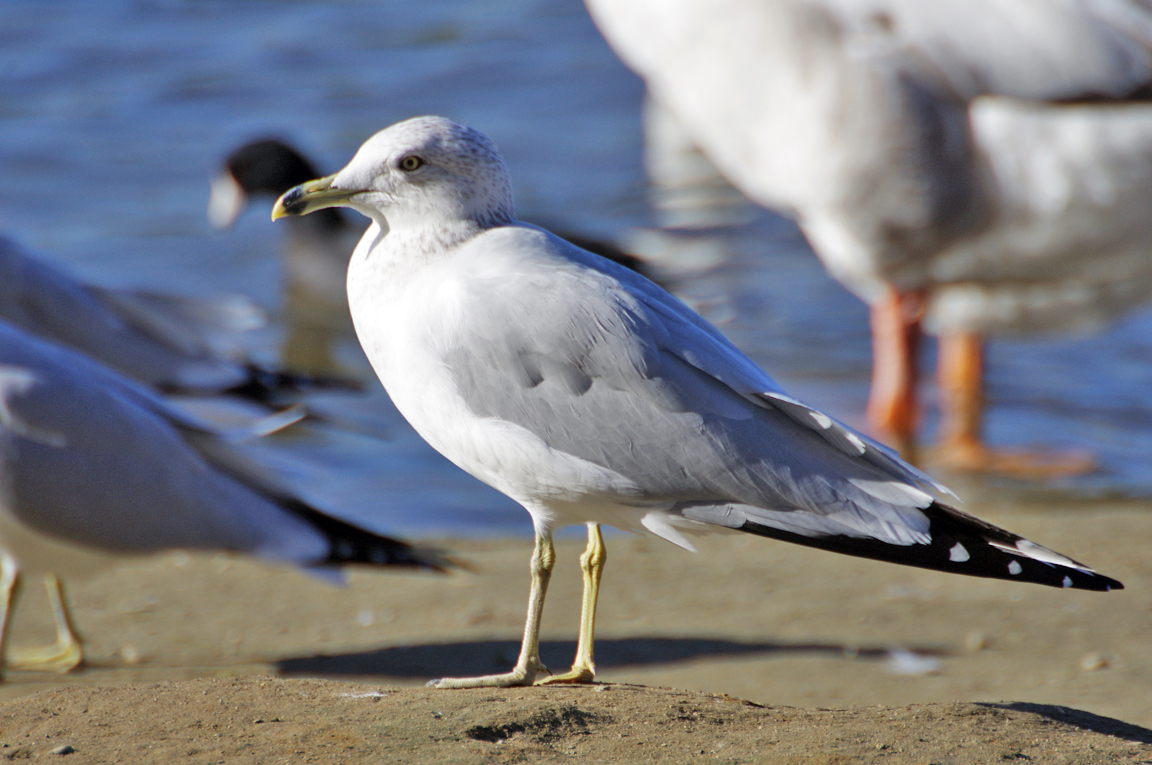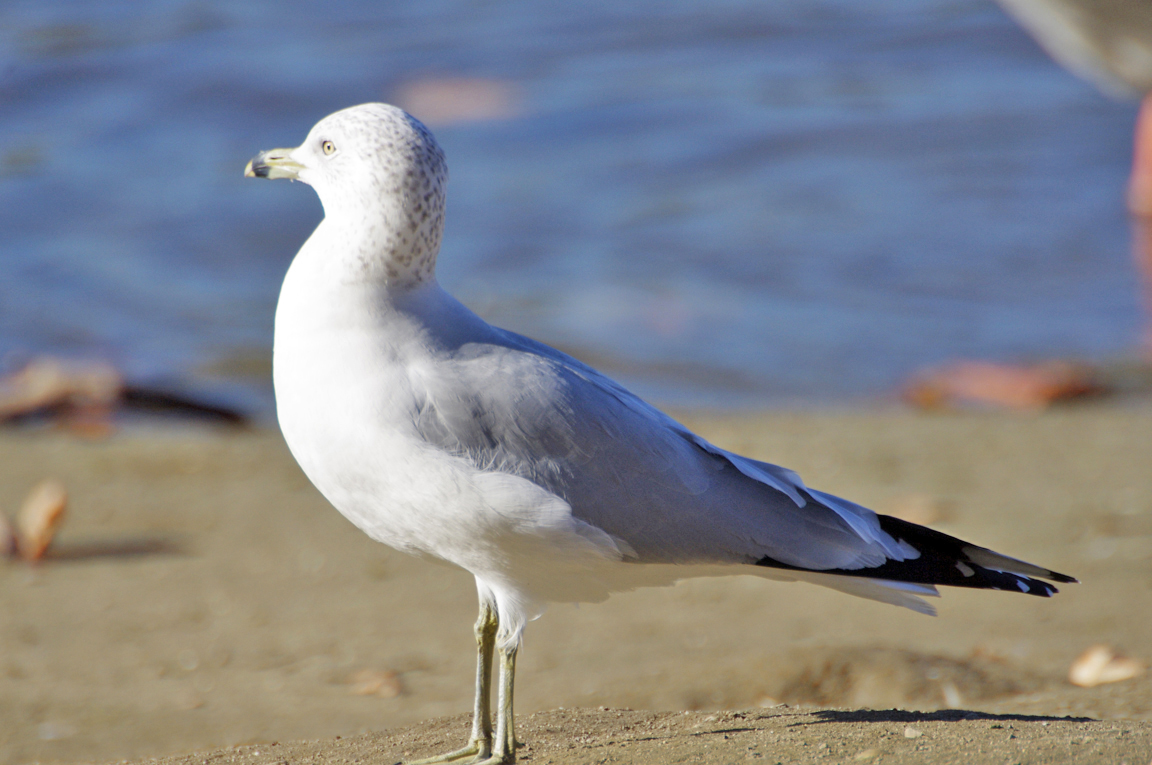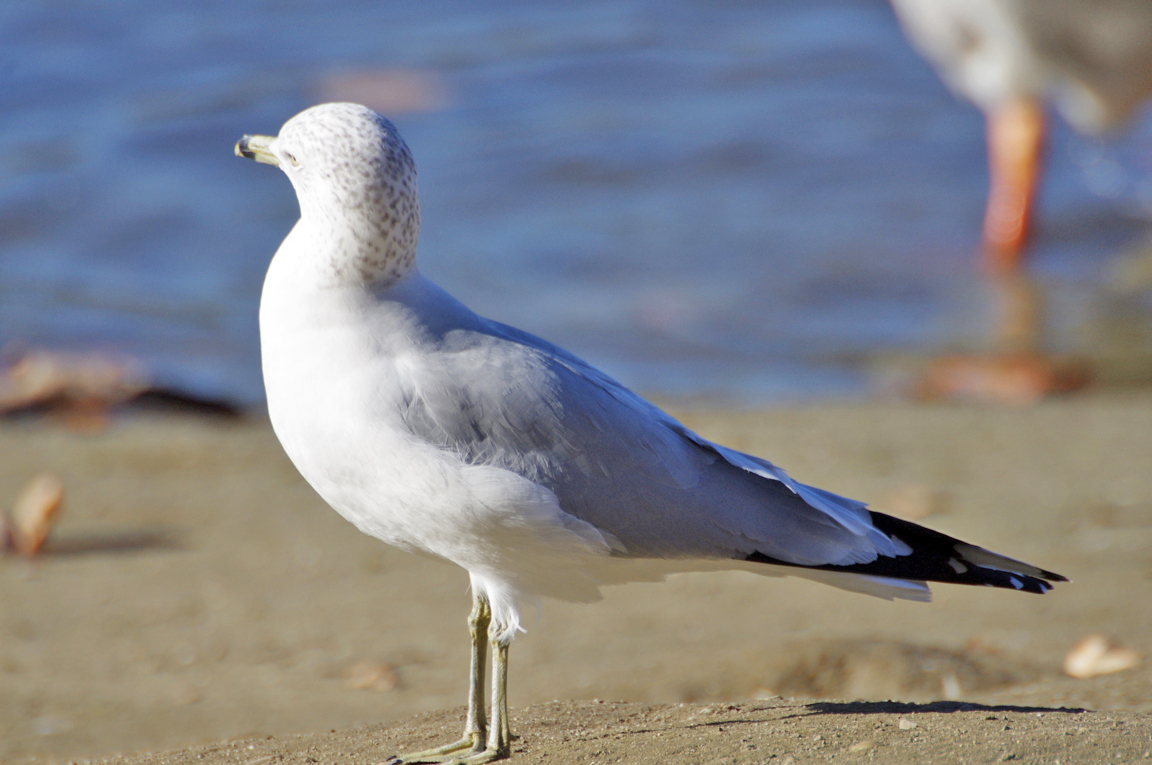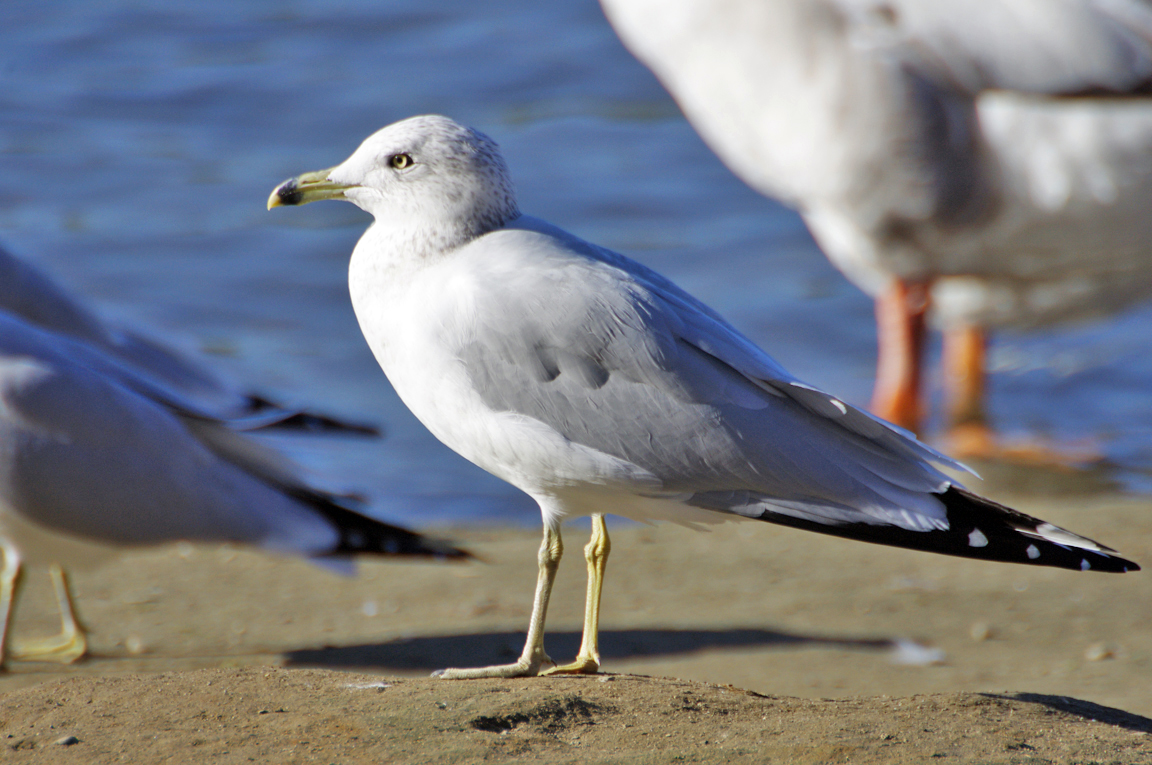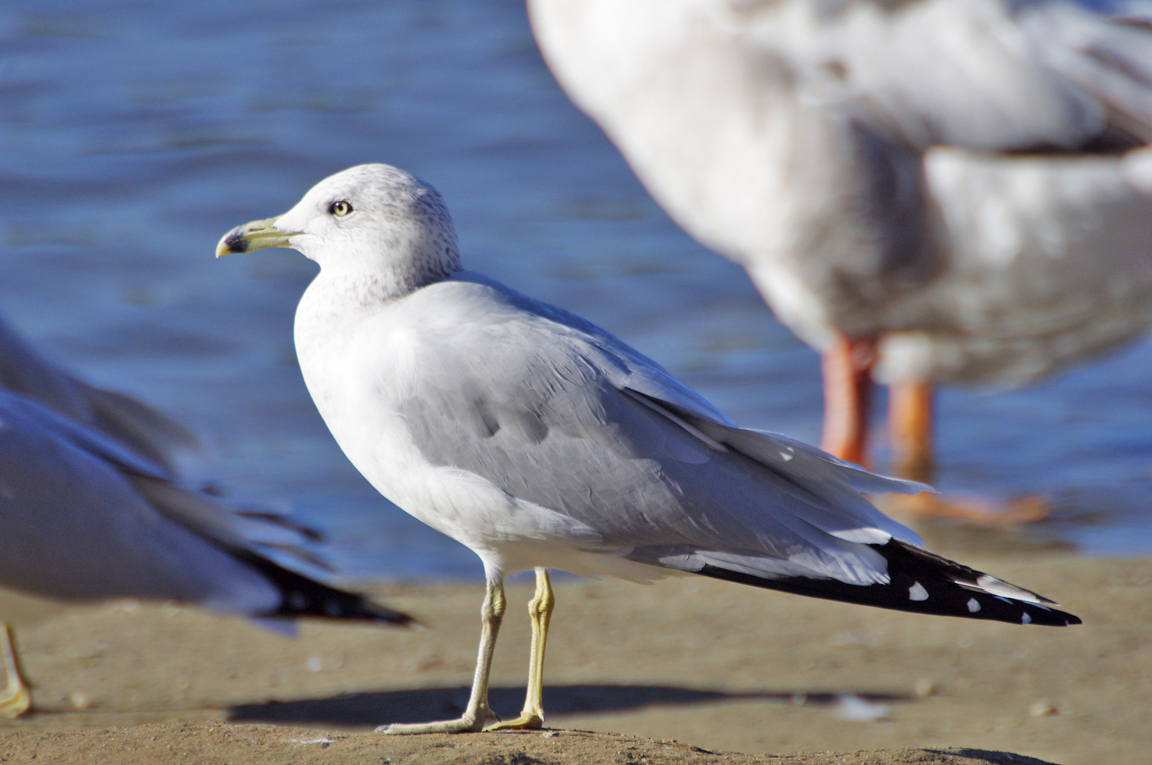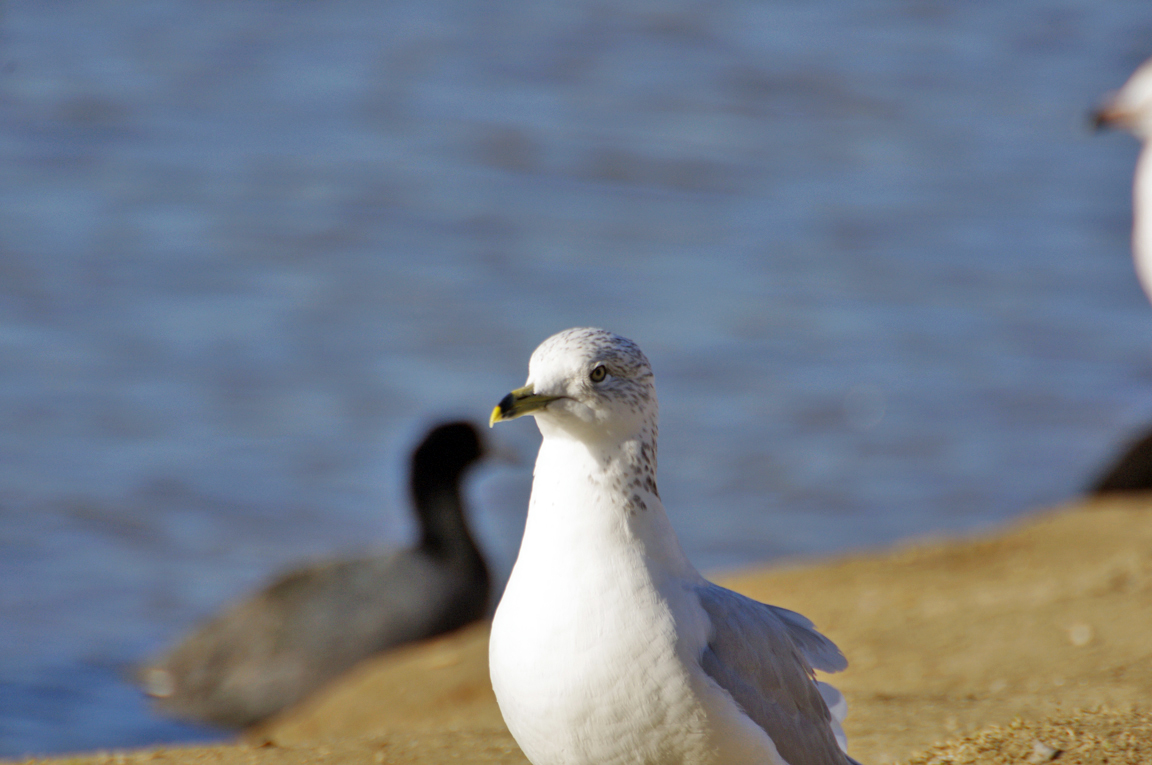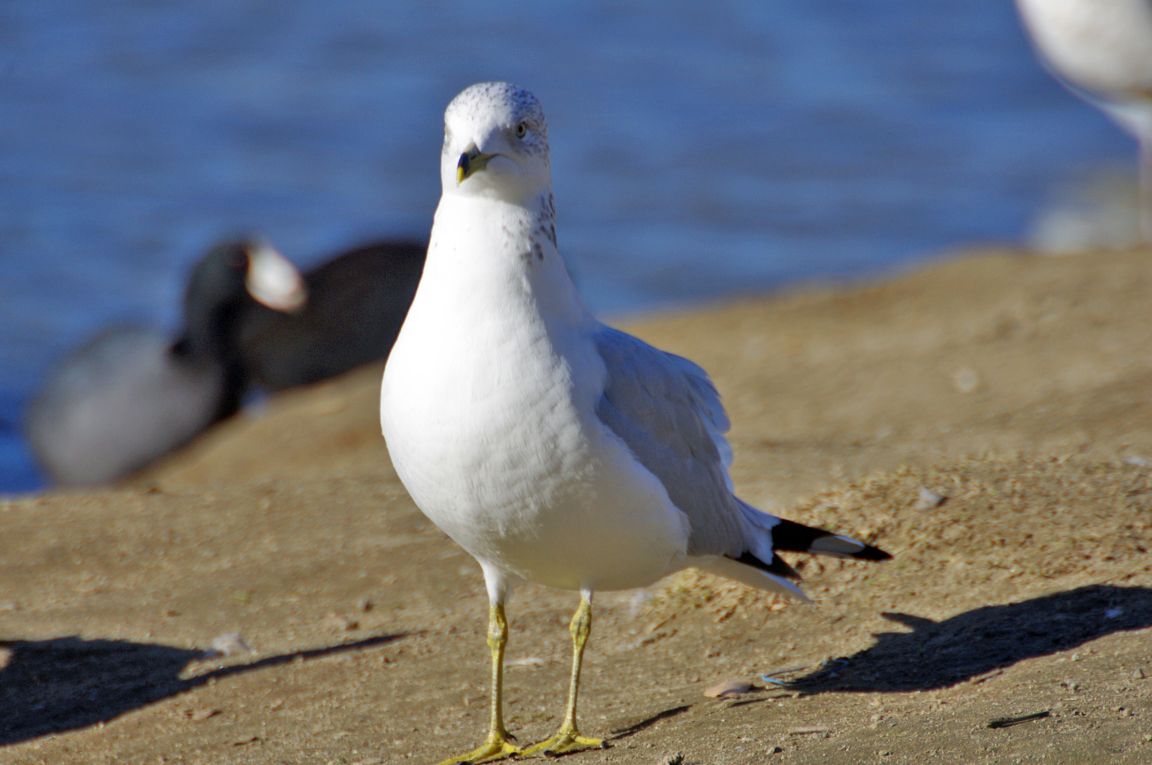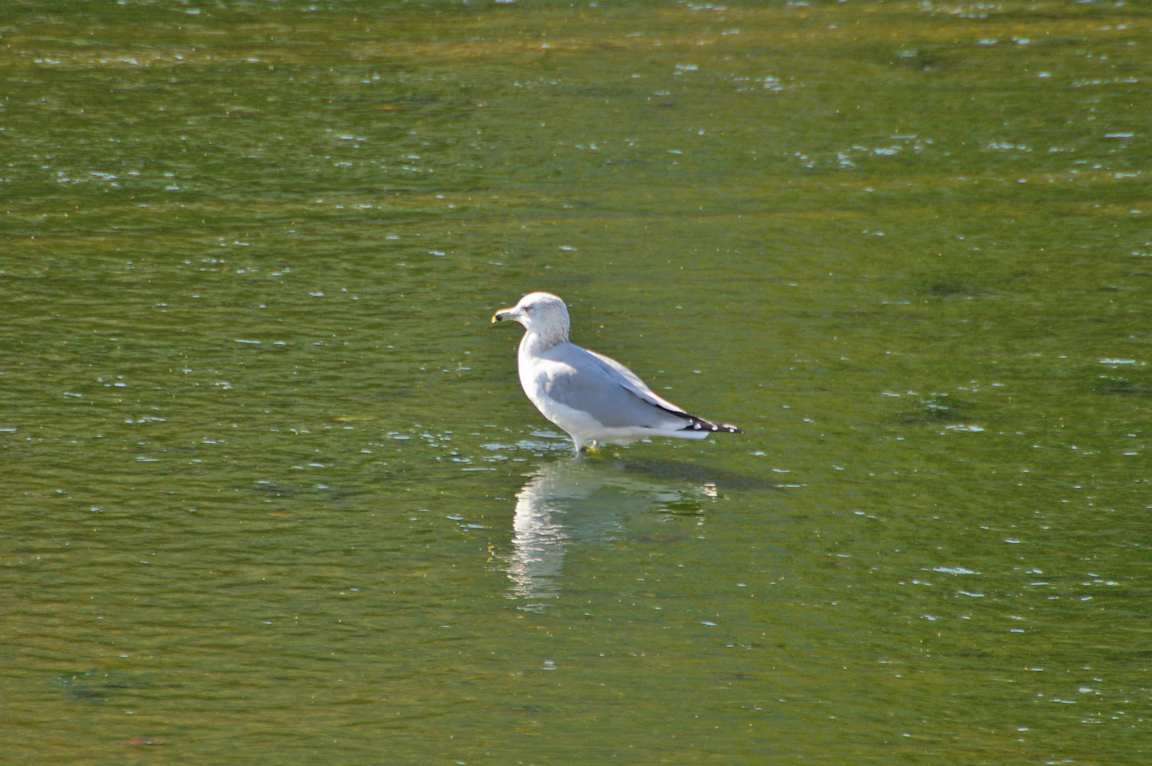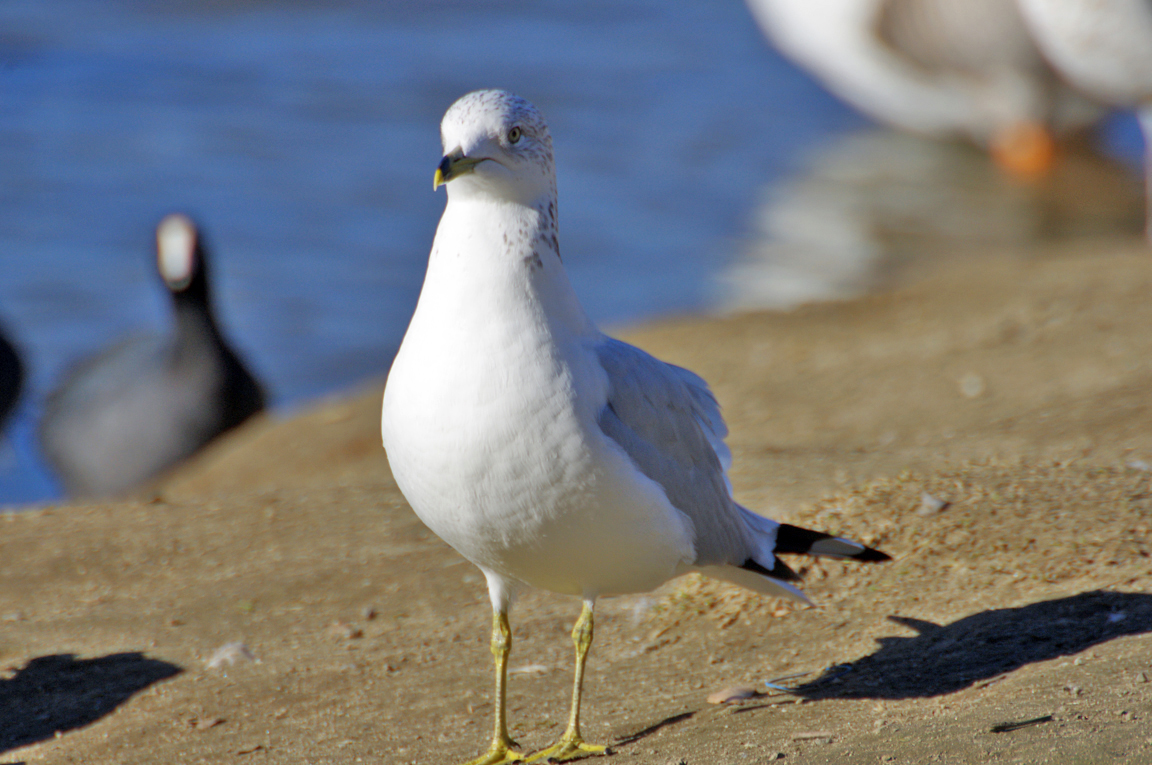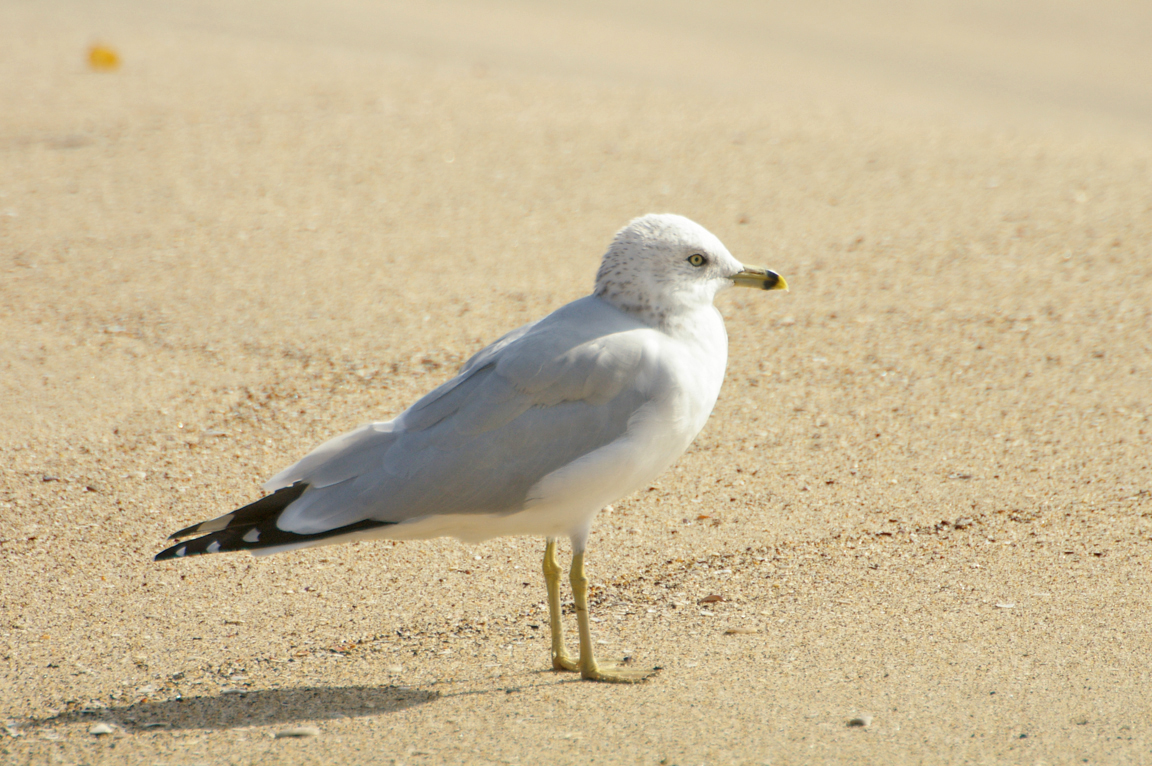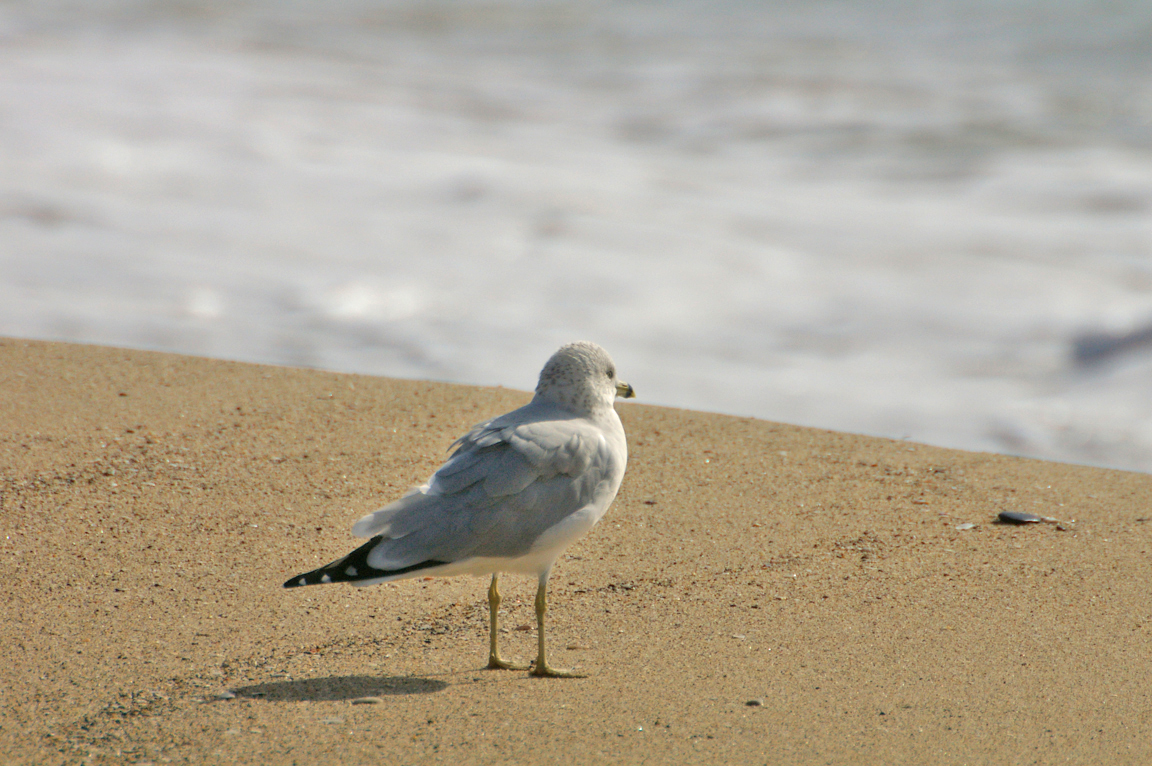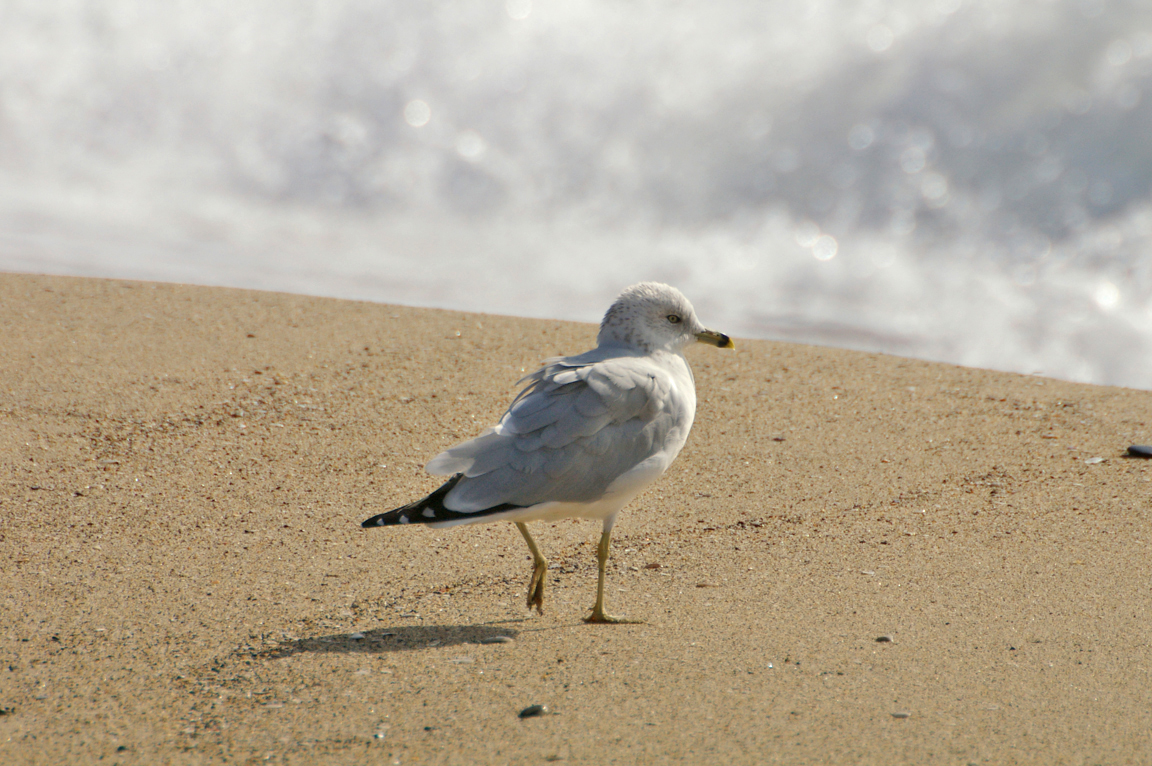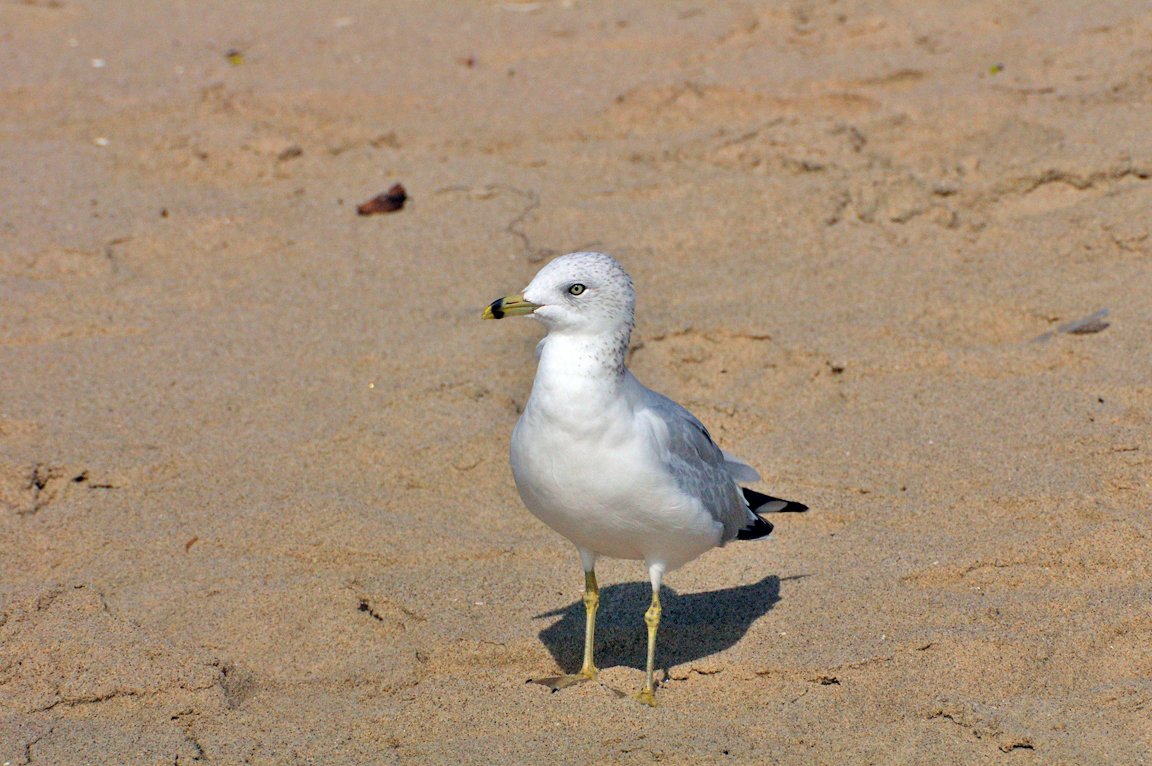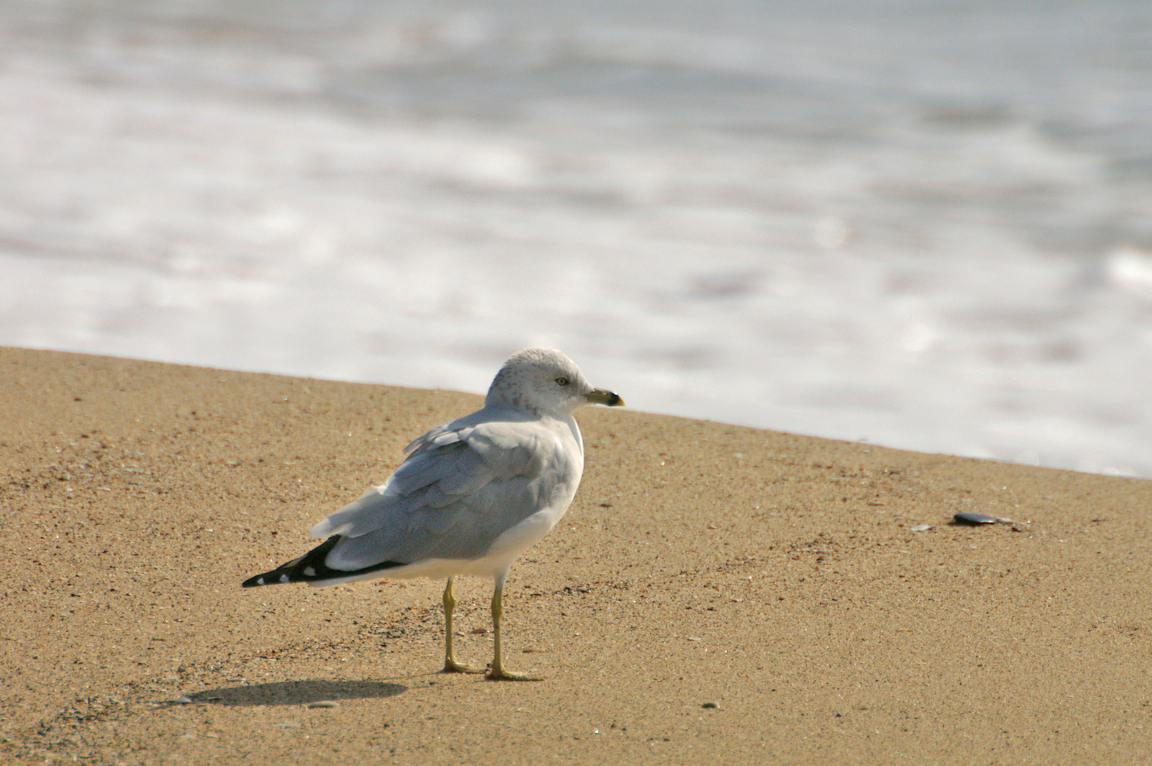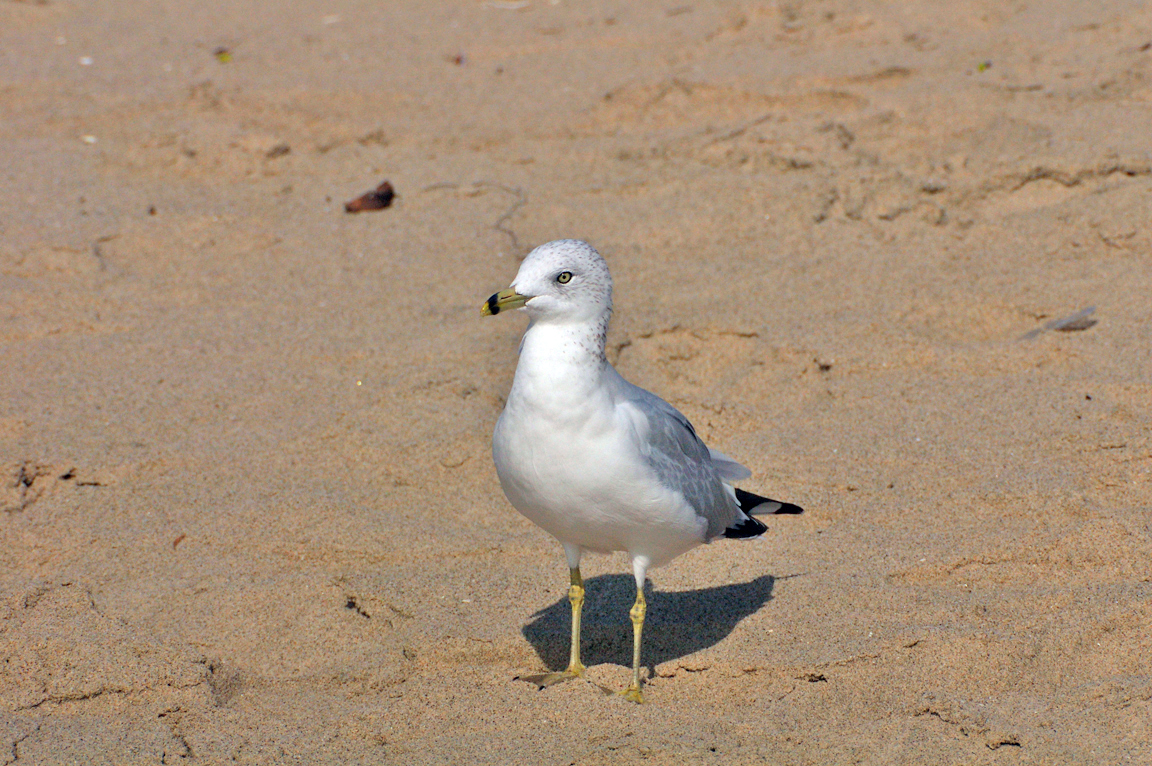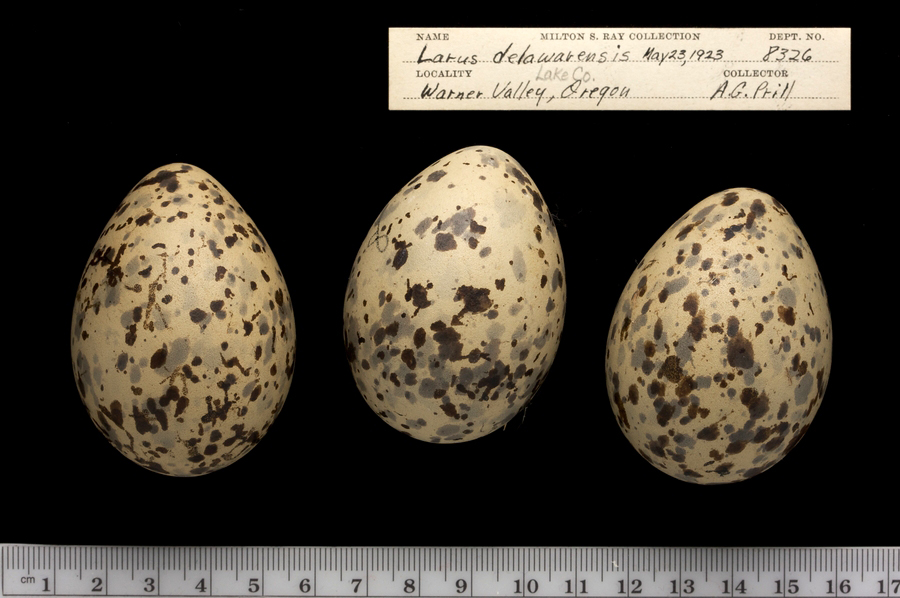|
|
|
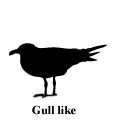 |
Ring-billed Gull
|
| Larus delawarensis | |
A familiar parking lot gull, the Ring-billed Gull breeds primarily inland in North America. It can be found along the coasts, but many of these "seagulls" never see anything except fresh water all their lives.
Interesting Information
-
Young Ring-billed Gulls tested at only two days of age showed a preference for magnetic bearings that would take them in the appropriate direction for their fall migration.
-
Many, if not most, Ring-billed Gulls return to breed at the colony where they hatched. Once they have bred, they are likely to return to the same breeding spot each year, often nesting within a few meters of the last year's nest site. Many individuals return to the same wintering sites each winter too.
-
Although it is considered a typical large white-headed gull, the Ring-billed Gull has been known to hybridize only with smaller, black-headed species, such as Franklin's, Black-headed, and Laughing gulls.
-
The Ring-billed Gullis sometimes called the "fast food gull" because it often hangs around fast food restaurants scavenging for food.
-
In the late 19th century, this bird was hunted for its plumage. Its population has since rebounded and it is probably the most common gull in North America.
-
A group of gulls has many collective nouns, including a "flotilla", "gullery", "screech", "scavenging", and "squabble" of gulls.
Description
Adult Description
-
Length Range: 46-48 cm (18-19 in)
-
Weight: 544 g (19.2 oz)
-
Size: Large (16 - 32 in)
-
Yellow bill with black ring near the tip.
-
Head and underparts white.
-
Back light gray.
-
Wingtips black with white spots.
-
Legs yellow.
Sex Differences
Sexes Similar
Immature
Juvenal plumage: Dirty, grayish brown head, back, and chest. Back feathers with light tips, giving a scaly appearance. Underparts streaked or barred, especially on the flanks. Tail gray with black band near tip. Wingtips black. Bill black with lighter base. Eyes dark. Legs pinkish.
First Winter (Basic I): Head and nape white with gray mottling. Pale gray feathers on back, some with dark tips. Mottled brown feathers on wings. Underparts white with some gray markings or barring. Wingtips black. Bill pinkish with outer third black, and very tip pink. Tail whitish with black band near tip. Eyes dark brown. Legs pinkish.
First Summer (Alternate I): Head and nape white with sparse light mottling. Back light gray. Wings with worn brown feathers and blackish wingtips. Bill pinkish with outer third black, and very tip pink. Legs pinkish. Eyes dark.
Second Winter (Basic II): Head and nape white with gray mottling. Back and wings light gray. Breast, sides, and flanks white. Tail white with broken dark band near tip. Wingtip feathers dark brown to black with only small white tips, if any. Bill yellowish with large black band near tip. Legs yellowish.
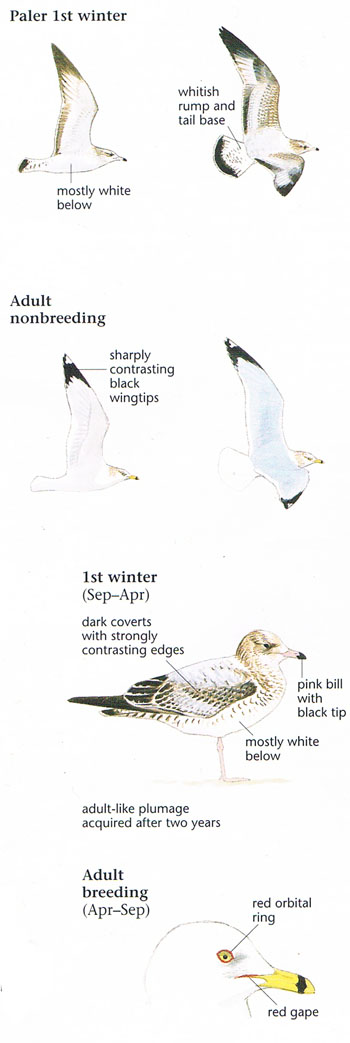
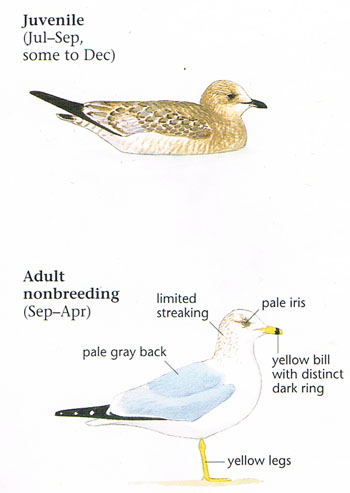
Photo taken from: The Sibley Field Guide by David Allen Sibley
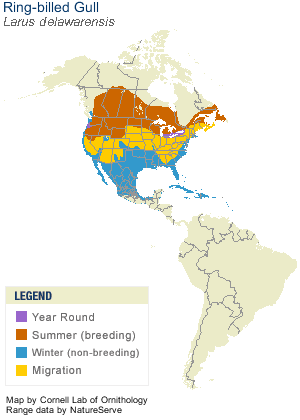
© 2003 Cornell Lab of Ornithology
|
Habitat |
|
Nests on islands. Found around fresh water, landfills, golf courses, farm fields, shopping areas, and coastal beaches. |
|
Behavior |
|
Forages while walking on land, dips for food on surface of water, skims shallow water for small fish, hawks for flying insects. |
|
Food |
|
Fish, insects, earthworms, rodents, grain, garbage. |
Taxonomy
| Kingdom: | Animalia |
| Phylum: | Chordata |
| Subphylum: | Vertebrata |
| Class: | Aves |
| Order: | Charadriiformes |
| Family: | Laridae |
| Subfamily: | Larinae |
| Genus: | Larus |
| Species: | Larus delawarensis |
Similar Species |
|
|
Bird Sound |
|
Call a shrill "oooww." Also series of short "a-a-a-a-a-a"s. |
|
Eggs look like this |
|
Photo taken from: ARCTOS Collaborative Collection Management Solution |
Videos
Ring-billed Gull
Up close and personal #1
Ring-billed Gull
Up close and personal #2
